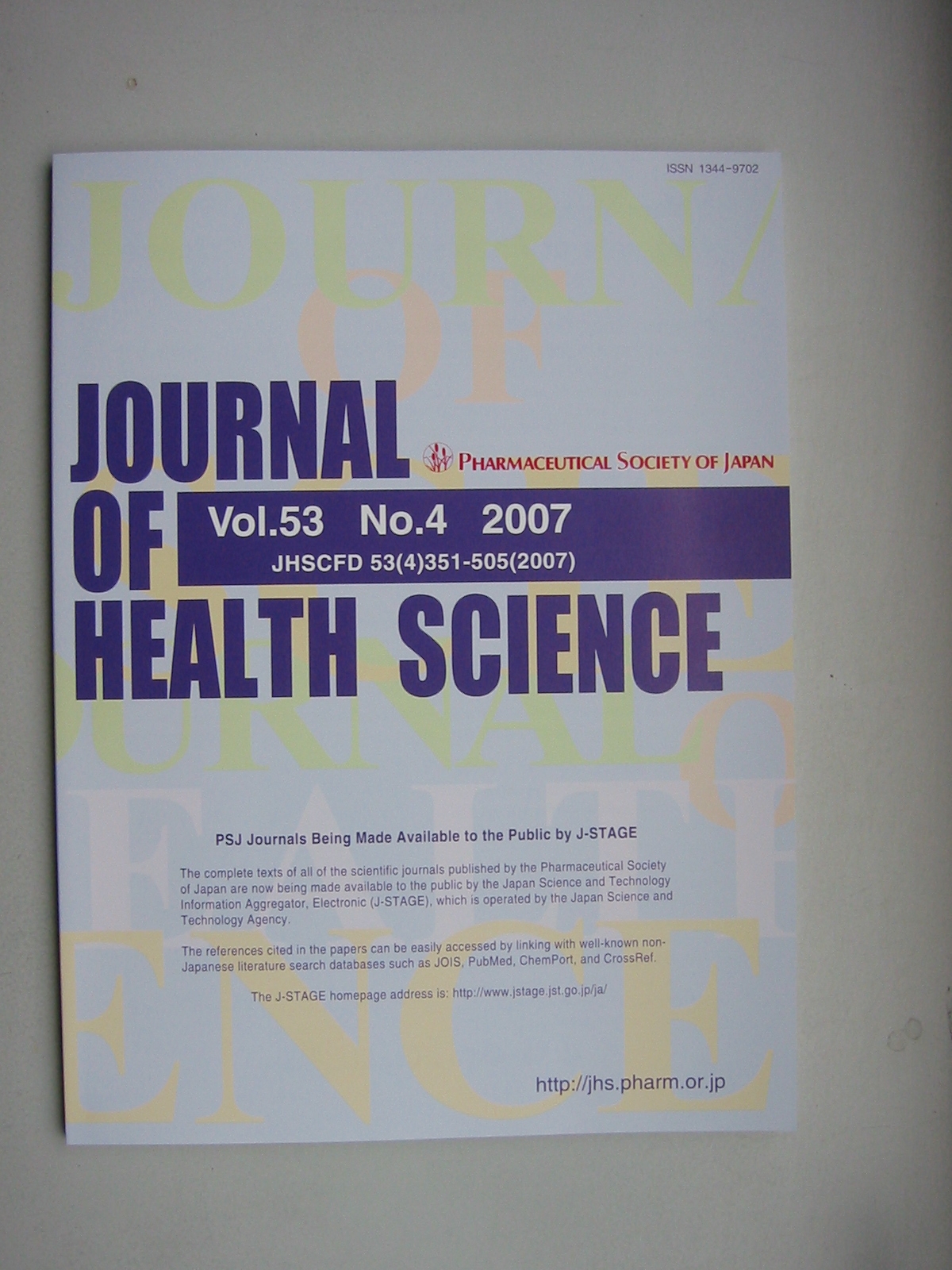Volume 57, Issue 5
Displaying 1-10 of 10 articles from this issue
- |<
- <
- 1
- >
- >|
REVIEW
-
2011Volume 57Issue 5 Pages 385-396
Published: 2011
Released on J-STAGE: October 01, 2011
Download PDF (350K)
REGULAR ARTICLES
-
2011Volume 57Issue 5 Pages 397-400
Published: 2011
Released on J-STAGE: October 01, 2011
Download PDF (293K) -
Effects of a Purified Saponin Mixture from Alfalfa on Plasma Lipid Metabolism in Hyperlipidemic Mice2011Volume 57Issue 5 Pages 401-405
Published: 2011
Released on J-STAGE: October 01, 2011
Download PDF (204K)
RESEARCH LETTERS
-
2011Volume 57Issue 5 Pages 406-413
Published: 2011
Released on J-STAGE: October 01, 2011
Download PDF (2218K) -
2011Volume 57Issue 5 Pages 414-419
Published: 2011
Released on J-STAGE: October 01, 2011
Download PDF (480K) -
2011Volume 57Issue 5 Pages 420-424
Published: 2011
Released on J-STAGE: October 01, 2011
Download PDF (1291K) -
2011Volume 57Issue 5 Pages 425-431
Published: 2011
Released on J-STAGE: October 01, 2011
Download PDF (391K) -
2011Volume 57Issue 5 Pages 432-435
Published: 2011
Released on J-STAGE: October 01, 2011
Download PDF (292K) -
2011Volume 57Issue 5 Pages 436-441
Published: 2011
Released on J-STAGE: October 01, 2011
Download PDF (401K) -
2011Volume 57Issue 5 Pages 442-447
Published: 2011
Released on J-STAGE: October 01, 2011
Download PDF (303K)
- |<
- <
- 1
- >
- >|
